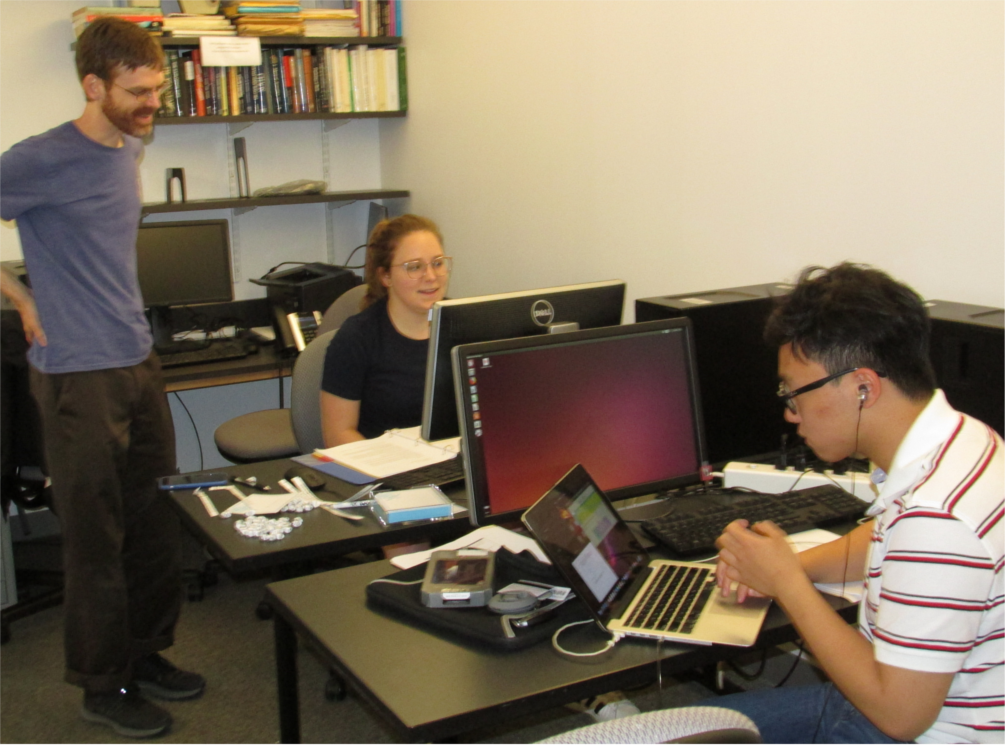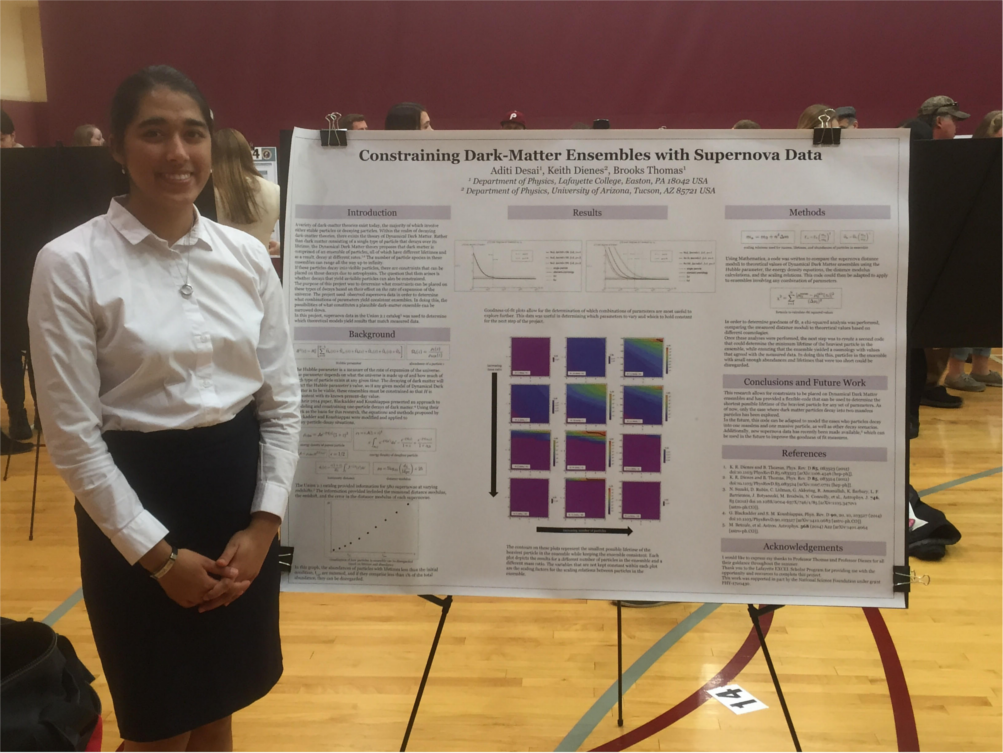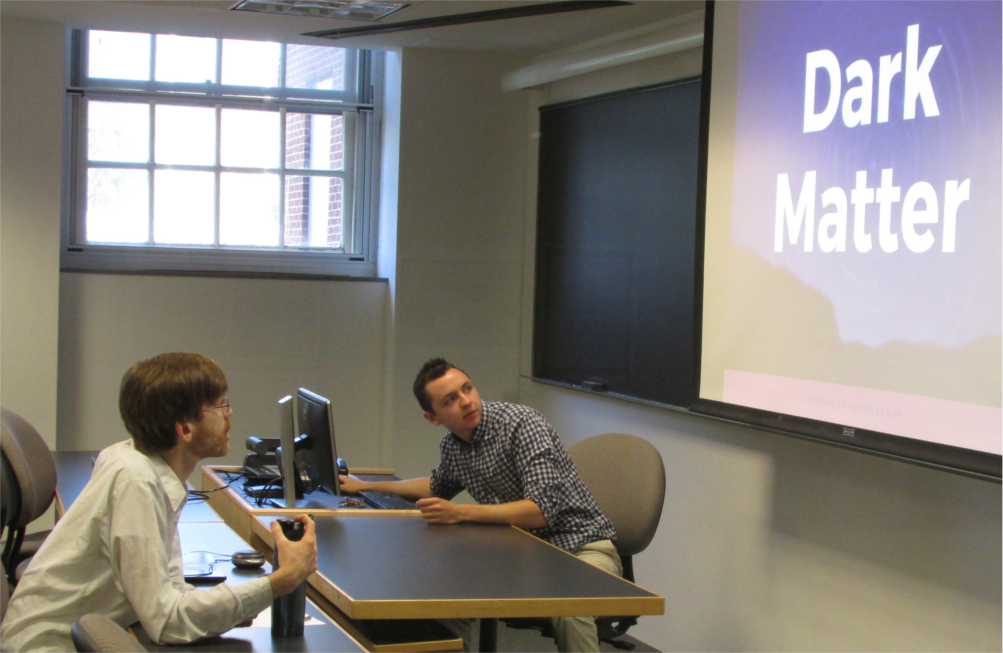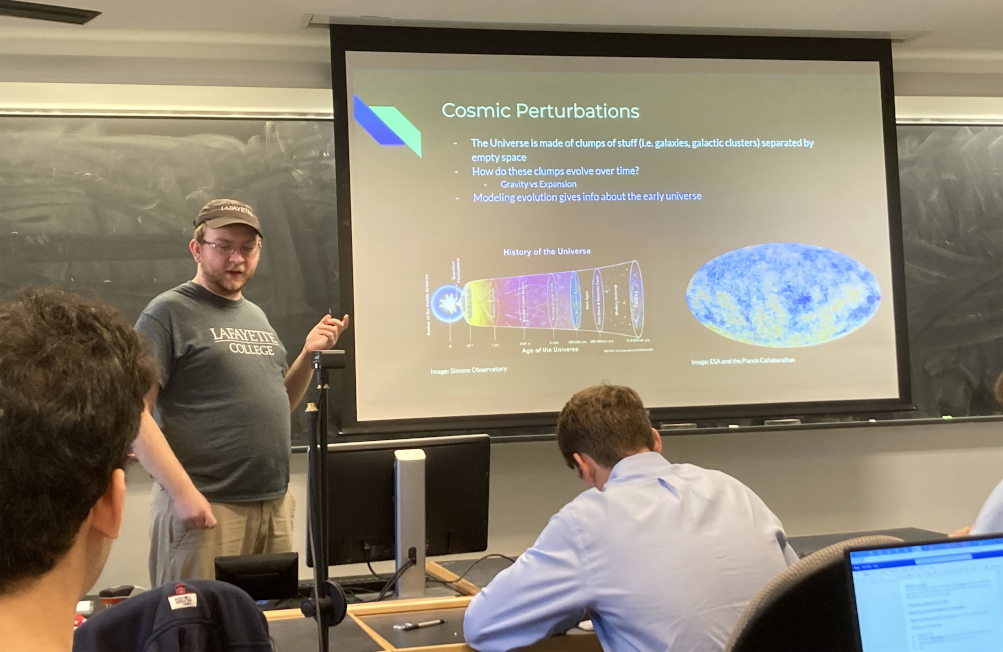



Research Interests
My work as a theoretical particle physicist is primarily focused on identifying the nature and properties of the mysterious dark matter in our universe. Overwhelming evidence now indicates that the majority of the matter in the universe is not only “dark,” in the sense that it does not interact appreciably with electromagnetic radiation, but also not composed of “normal” atomic matter at all. In fact, it appears to be something completely beyond the scope of what our Standard Model of particle physics can explain!
As this puzzling picture has crystallized, the quest to understand the nature of dark matter has given birth to an interdisciplinary effort uniting researchers in a diverse range of fields including astrophysics, cosmology, nuclear physics, collider physics, neutrino physics, condensed-matter physics, and particle theory. One of my primary aims as a dark-matter theorist is to examine the dark-matter question from as broad a perspective and within as general a framework as experimental data allow. This means considering the full range of viable possibilities for addressing the dark-matter question — especially those which challenge some of the typical assumptions about the nature and properties of the dark matter.
In addition to my work on dark matter, my research interests extend over a broad range of topics in particle theory and phenomenology. These include Higgs-boson physics, supersymmetry theory and phenomenology, and the origin of the observed matter-antimatter asymmetry in our universe.
Excel Students
- Anna Paulsen ’24: Summer 2023
- Daniel Hoover ’24: Summer 2022 – Spring 2023
- Jordan Wilhelm ’24: Summer 2021
- Kevin Manogue ’22: Summer 2020 – January Interim 2021
- Tara Leininger ’22: Summer 2019 – Spring 2021
- Bobby Luo ’21: Summer 2019 – Summer 2020
- Aditi Desai ’20: Summer 2018
- Ethan Garvey ’19: Summer 2017 – Summer 2018
Selected Publications
(A complete list of my research publications can be found on INSPIRE. Note that in High-Energy Theory, author lists are strictly alphabetical.)
- K. R. Dienes, J. L. Feng, M. Fieg, F. Huang, S. J. Lee, and B. Thomas, “Extending the Discovery Potential for Inelastic-Dipole Dark Matter with FASER,” Phys. Rev. D 107, no. 11, 115006 (2023) [arXiv:2301.05252].
- K. R. Dienes, L. Heurtier, F. Huang, D. Kim, T. M. P. Tait, and B. Thomas, “Primordial Black Holes Put the Universe in Stasis,” arXiv:2212.01369.
- K. R. Dienes, F. Huang, J. Kost, B. Thomas, and H.-B. Yu, “Evaluating Lyman-ɑ Constraints for General Dark-Matter Velocity Distributions: Multiple Scales and Cautionary Tales,” Phys. Rev. D 106, no. 12, 123521 (2022) [arXiv:2112.09105].
- K. R. Dienes, L. Heurtier, F. Huang, D. Kim, T. M. P. Tait, and B. Thomas, “Stasis in an Expanding Universe: A Recipe for Stable Mixed-Component Cosmological Eras,” Phys. Rev. D 105, no. 2, 023530 (2022) [arXiv:2111.04753].
- K. R. Dienes, D. Kim, T. Leininger, and B. Thomas, “Tumblers: A Novel Collider Signature for Long-Lived Particles,” Phys. Rev. D 106, no. 9, 095012 (2022) [arXiv:2108.02204].
- K. R. Dienes, F. Huang, J. Kost, K. Manogue, and B. Thomas, “Extracting Dark-Matter Velocities from Halo Masses: A Reconstruction Conjecture,” Phys. Rev. D 106, no. 8, 083506 (2022) [arXiv:2101.10337].
- K. R. Dienes, F. Huang, J. Kost, S. Su, and B. Thomas, “Deciphering the Archaeological Record: Cosmological Imprints of Non-Minimal Dark Sectors,” Phys. Rev. D 101, no. 12, 123511 (2020) [arXiv:2001.02193].
- Y. Buyukdag, K. R. Dienes, T. Gherghetta, and B. Thomas, “Partially Composite Dynamical Dark Matter,” Phys. Rev. D 101, no. 7, 075054 (2020) [arXiv:1912.10588].
- K. R. Dienes, D. Kim, H. Song, S. Su, B. Thomas, and D. Yaylali, “Non-Minimal Dark Sectors: Mediator-Induced Decay Chains and Multi-Jet Collider Signatures,” Phys. Rev. D 101, no. 7, 075024 (2020) [arXiv:1910.01129].
- A. Desai, K. R. Dienes, and B. Thomas, “Constraining Dark-Matter Ensembles with Supernova Data,” Phys. Rev. D 101, no. 3, 035031 (2020) [arXiv:1909.07981].
- K. R. Dienes, J. Kost, and B. Thomas, “Enlarging the Space of Viable Inflation Models: A Slingshot Mechanism,” Phys. Rev. D 100, no. 8, 083516 (2019) [arXiv:1907.10074].
- K. R. Dienes, J. Kumar, P. Stengel, and B. Thomas, “Cosmological Constraints on Unstable Particles: Numerical Bounds and Analytic Approximations,” Phys. Rev. D 99, no. 4, 043513 (2019) [arXiv:1810.10587].
- D. Curtin, K. R. Dienes, and B. Thomas, “Dynamical Dark Matter, MATHUSLA, and the Lifetime Frontier,” Phys. Rev. D 98, no. 11, 115005 (2018) [arXiv:1809.11021].
- D. Curtin et al., “Long-Lived Particles at the Energy Frontier: The MATHUSLA Physics Case,” [arXiv:1806.07396].
- K. R. Dienes, J. Fennick, J. Kumar, and B. Thomas, “Dynamical Dark Matter from Thermal Freeze-Out,” Phys. Rev. D 97, no. 6, 063522 (2018) [arXiv:1712.09919].
- K. R. Dienes, J. Kumar, and B. Thomas, and D. Yaylali, “Off-Diagonal Dark-Matter Phenomenology: Exploring Enhanced Complementarity Relations in Non-Minimal Dark Sectors,” Phys. Rev. D 96, no. 11, 115009 (2017) [arXiv:1708.09698].
- M. Battaglieri et al., “US Cosmic Visions: New Ideas in Dark Matter 2017: Community Report,” [arXiv:1707.04591].
- K. R. Dienes, J. Kost, and B. Thomas, “Kaluza-Klein Towers in the Early Universe: Phase Transitions, Relic Abundances, and Applications to Axion Cosmology,” Phys. Rev. D 95, no. 12, 123539 (2017) [arXiv:1612.08950].
- K. R. Dienes, F. Huang, S. Su, and B. Thomas, “Dynamical Dark Matter from Strongly-Coupled Dark Sectors,” Phys. Rev. D 95, no. 4, 043526 (2017) [arXiv:1610.04112].
- K. Boddy, K. R. Dienes, D. Kim, J. Kumar, J. C. Park, and B. Thomas, “Boxes, Boosts, and Energy Duality: Understanding the Galactic-Center Gamma-Ray Excess through Dynamical Dark Matter,” Phys. Rev. D 95, no. 5, 055024 (2017) [arXiv:1609.09104].
- K. Boddy, K. R. Dienes, D. Kim, J. Kumar, J. C. Park, and B. Thomas, “Lines and Boxes: Unmasking Dynamical Dark Matter through Correlations in the MeV Gamma-Ray Spectrum,” Phys. Rev. D 94, no.9, 095027 (2016) [arXiv:1606.07440].
- K. R. Dienes, J. Fennick, J. Kumar, and B. Thomas, “Randomness in the Dark Sector: Emergent Mass Spectra and Dynamical Dark Matter Ensembles,” Phys. Rev. D 93, no. 8, 083506 (2016) [arXiv:1601.05094]
- K. R. Dienes, J. Kost, and B. Thomas, “A Tale of Two Timescales: Mixing, Mass Generation, and Phase Transitions in the Early Universe,” Phys. Rev. D 93, no. 4, 043540 (2016) [arXiv:1509.00470].
- K. R. Dienes, J. Kumar, B. Thomas, and D. Yaylali, “Dark-Matter Decay as a Complementary Probe of Multicomponent Dark Sectors,” Phys. Rev. Lett. 114, no. 5, 051301 (2015) [arXiv:1406.4868].
- K. R. Dienes, J. Kumar, and B. Thomas, “Direct Detection of Dynamical Dark Matter,” Phys. Rev. D 86, 055016 (2012) [arXiv:1208.0336].
- K. R. Dienes, S. Su, and B. Thomas, “Distinguishing Dynamical Dark Matter at the LHC,” Phys. Rev. D 86, 054008 (2012) [arXiv:1204.4183].
- K. R. Dienes and B. Thomas, “Dynamical Dark Matter: I. Theoretical Overview,” Phys. Rev. D 85, 083523 (2012) [arXiv:1106.4546].
- K. R. Dienes and B. Thomas, “On the Inconsistency of Fayet-Iliopoulos Terms in Supergravity Theories,” Phys. Rev. D 81, 065023 (2010) [arXiv:0911.0677].
- S. Su and B. Thomas, “The LHC Discovery Potential of a Leptophilic Higgs Boson,” Phys. Rev. D 79, 095014 (2009) [arXiv:0903.0667].
